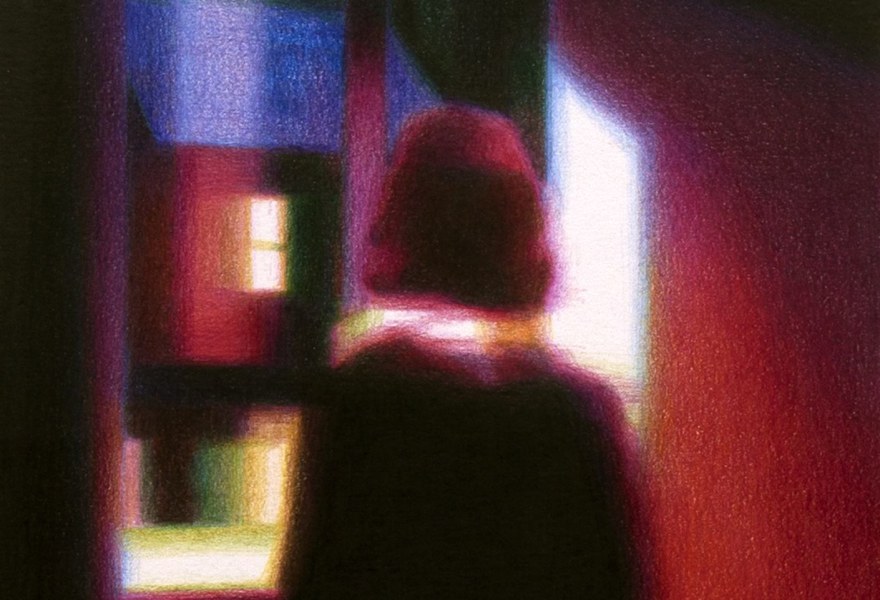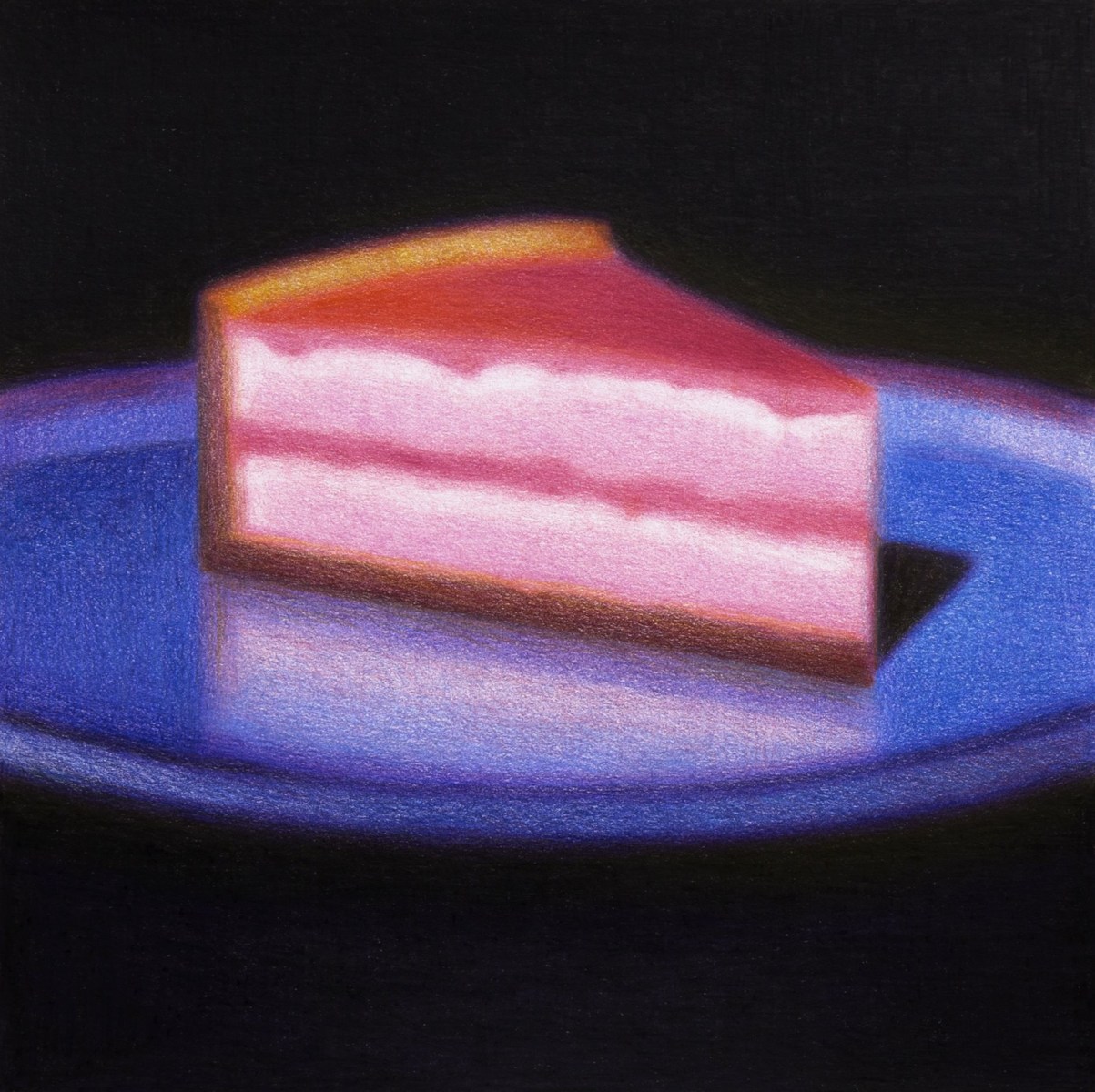28 april 2023, Flor Linckens
The mental archive of Steffen Kern
On Saturday 29 April, a solo exhibition by Steffen Kern will open at Rutger Brandt Gallery in Amsterdam. If you look at the work of the German artist through your eyelashes, they initially appear to be grainy photographs. But Kern does not use photography and light for his works, but rather colour pencil or charcoal on paper or cardboard, occasionally supplemented with ink.
The inspiration for these works lies not so much in concrete images, but in what the artist calls 'meta-images': a mental archive based on the large amount of images that the artist sees on a daily basis. Because those images are probably similar to the images most of us see — say, in movies or pop culture or in our everyday lives — you could speak of a certain universality or a collective experience or memory. Kern calls this the 'globalization of images', the logical consequence of a bombardment of similar images. He is interested in the influence these images have on our subconscious. His work raises interesting questions about the relationship between images and reality: are we looking at reality here or at a cinematic, staged representations of reality? And do we actually still see the difference? To what extent do the images we see affect our memory and perception?
At the same time, Kern's works are definitely rooted in photography because he does use visual characteristics that we know from analogue photography, including a certain graininess, framing, distortions, imperfections and the reflection of light. The artist plays carefully with scale, light, depth, shadows, contrasts and perspective.
It results in a multitude of nearly photo-realistic images in monochrome or, conversely, highly saturated colours. The images don't seem to have anything do with each other. In the exhibition at Rutger Brandt Gallery, for example, we see everyday objects and scenes such as a slice of cake, a crane, a refrigerator and a dark corridor at night, in which only a slightly opened door provides the space with light. Although commonplace, the images also exude a certain implicit tension. Other images appear somewhat more explicitly charged, including a guillotine in a museum setting and an ominously shadowed prison watchtower.
Kern studied at the Akademie der Bildenden Künste in Munich and Vienna and was taught by Daniel Richter, among others. His work has been shown in locations including the Kunsthal in Rotterdam, Kunstverein Munich and Big Art, and is part of the collections of the LAM museum, the Aegon Art Collection, the ING Global Art Collection and the Secrid Collection.



